
Fundamentals
The concept of historical beauty standards represents the collective ideals and aesthetic benchmarks that have, across various eras and cultures, delineated what is considered comely or admirable in appearance. These prevailing notions, often unstated yet deeply ingrained, dictated preferences for bodily forms, facial features, and crucially for our exploration, hair. These standards were not static; they flowed and shifted with the currents of societal values, spiritual beliefs, and economic realities.
They often reflected power dynamics, signaling status, group affiliation, or even one’s perceived proximity to dominant cultural norms. To understand these historical dictates is to grasp a piece of humanity’s shared past, where personal presentation became a potent language.
Examining the historical beauty standards from the perspective of textured hair requires a journey through time and across continents, particularly to the heart of African traditions and the diaspora. For countless generations, across diverse African societies, hair was an expressive medium, a canvas for storytelling, and a marker of identity. The care and adornment of hair were rarely mere acts of vanity; they were rituals steeped in familial bonds, communal practices, and spiritual connections.
These indigenous understandings of beauty were vibrant and self-sustaining, celebrating the natural variations of hair texture and its intrinsic versatility. Each curl, coil, and strand held a specific purpose within a broader aesthetic system.
A fundamental aspect of these standards was the recognition of hair’s inherent vitality and its connection to the life force itself. Traditional African beauty standards often venerated hair that was well-kept, intricately styled, and reflective of one’s journey through life. Different styles might communicate age, marital status, social standing, or even religious affiliation.
The practices associated with hair care, such as oiling, braiding, and adorning, were passed down through generations, becoming a living heritage. These ancestral methods provided not only aesthetic appeal but also significant benefits for hair health, preserving its strength and natural beauty.
Historical beauty standards embody the changing ideals of attractiveness across eras and cultures, acting as profound societal indicators.
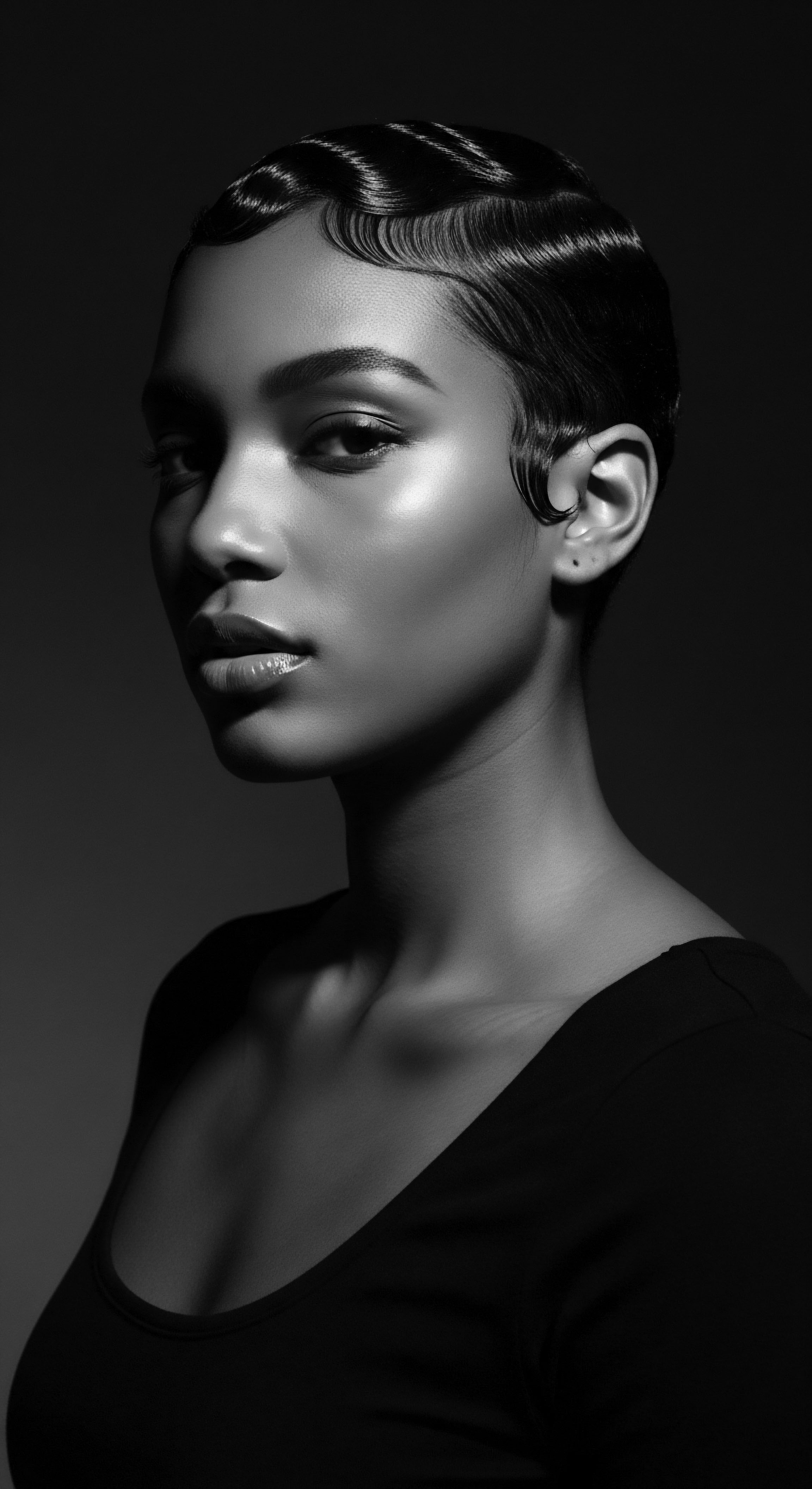
Hair as a Map of Identity
Consider the way hair became a legible map of identity in many ancestral communities. For instance, among the Yoruba people of West Africa, intricate braiding patterns, such as the shuku or dada, were not merely ornamental. They conveyed social standing, lineage, and often, spiritual significance.
The act of hair styling itself was a communal affair, a time for sharing wisdom and stories, a deep ritual. This collective engagement reinforced community bonds and ensured the transmission of knowledge about hair care and its cultural import.
The definition of beauty was inextricably linked to wellness and communal well-being. Hair that was cared for, that received attention and skilled hands, was deemed beautiful because it mirrored a person’s diligence, their connection to tradition, and their place within the social fabric. This understanding differed markedly from later, imposed standards that often reduced beauty to superficial conformity. The very act of styling and maintaining textured hair, with its unique requirements, fostered a specific relationship between individuals and their physical self, one grounded in patience and mindful attention.
- Patterns ❉ The various intricate designs created through braiding or twisting often communicated specific tribal affiliations or social roles.
- Adornments ❉ Beads, cowrie shells, and natural oils were frequently incorporated, enhancing the aesthetic appeal and signifying wealth or spiritual protection.
- Rituals ❉ Communal hair styling sessions reinforced familial ties and transmitted ancestral knowledge about hair care.
The foundational understanding of historical beauty standards, particularly in the context of textured hair, begins with recognizing this profound connection between personal appearance, communal practices, and an abiding sense of heritage. It is a lens through which we begin to appreciate how deeply hair was, and remains, entwined with identity and belonging for Black and mixed-race peoples. These early expressions of hair artistry laid the groundwork for a resilience that would be tested through centuries, yet never extinguished.

Intermediate
As we move to a more intermediate understanding, the concept of historical beauty standards expands beyond simple preferences to encompass the complex interplay of power, perception, and perseverance. These standards, particularly after significant global shifts such as colonialism and the transatlantic slave trade, became potent instruments of social control and assimilation. The inherent beauty of diverse hair textures, deeply celebrated in many ancestral African societies, confronted a new, imposed aesthetic hierarchy.
This hierarchy often valorized hair that was straight, fine, and flowing, mirroring European ideals. The collision of these two worldviews fundamentally altered the landscape of beauty for Black and mixed-race individuals, initiating a long and often painful redefinition of self-worth.
This period witnessed the emergence of significant pressures on Black and mixed-race communities to conform to alien beauty standards. Hair, being one of the most visible markers of identity, became a battleground. The quest for social acceptance, economic opportunity, and even safety frequently necessitated the alteration of textured hair.
Straightening methods, from hot combs to chemical relaxers, became widespread practices, driven by a complex mix of desire for conformity and survival. These practices, while offering a semblance of acceptance in a hostile environment, also carried the subtle burden of denigrating one’s innate hair texture.
Intermediate insight into historical beauty standards reveals them as dynamic constructs shaped by power, influencing self-perception within communities.
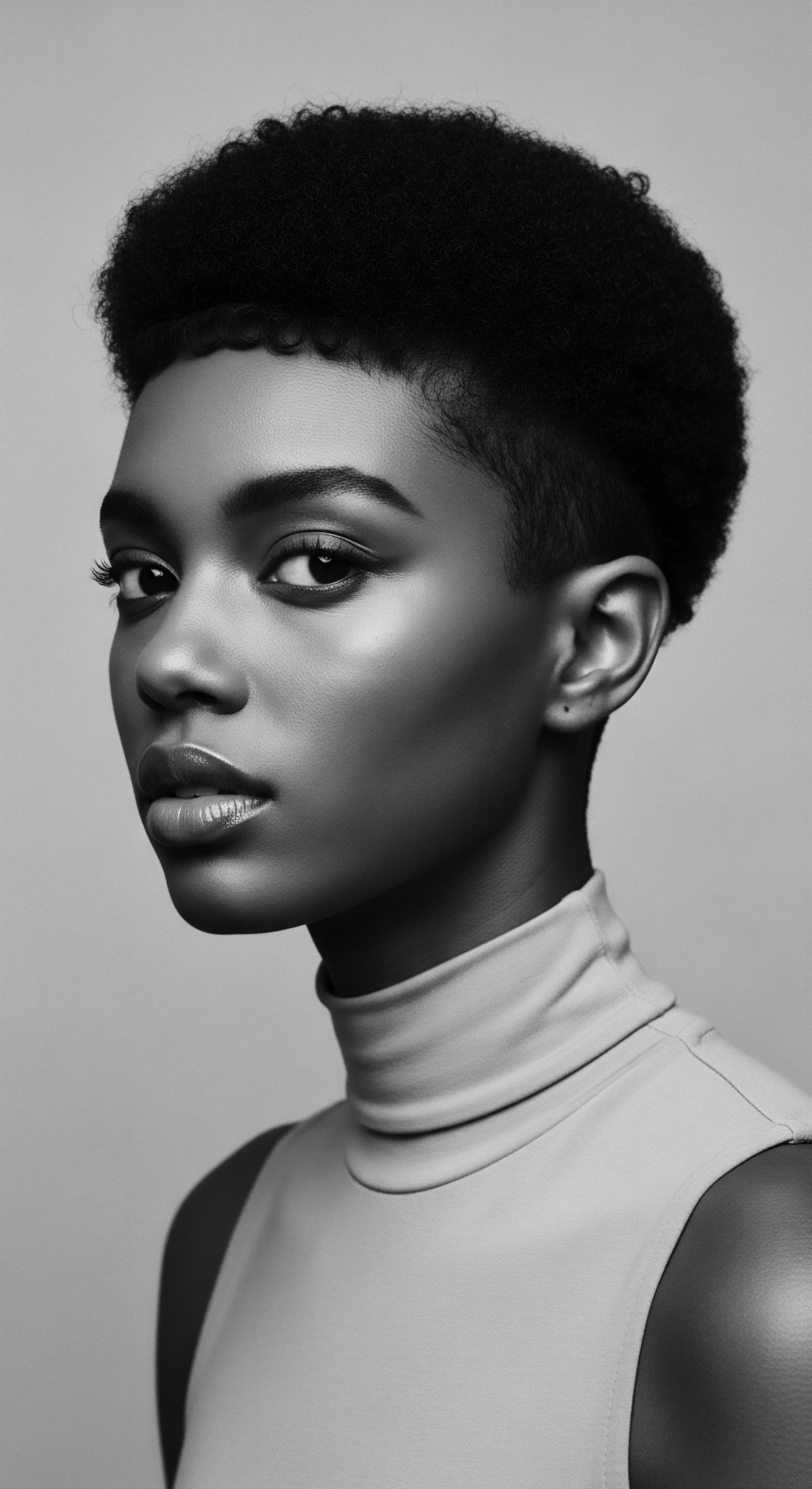
The Weight of External Gaze
The external gaze, particularly that of colonizers and slaveholders, began to define what was “acceptable” or “unacceptable” hair. This external validation, or lack thereof, created a societal pressure that permeated daily life. Consider the experiences of Black women in the American South during the post-Reconstruction era. The pervasive imagery of beauty in media and societal norms relentlessly promoted European hair textures as the ideal.
This imposed standard, sometimes internalized, contributed to a deeply complex relationship with natural hair. The choice to straighten hair became less about personal preference and more about navigating systems designed to devalue Blackness.
The hair industry, as it began to develop in the late 19th and early 20th centuries, played a significant role in both perpetuating and responding to these evolving standards. Figures like Madam C.J. Walker , while building an empire based on Black hair care products, primarily offered solutions that aimed to “improve” hair, often implying straightening or softening textures to align with prevailing ideals.
Her “Wonderful Hair Grower” was marketed to address scalp conditions, but its primary purpose was often understood within the context of facilitating straight styling, a direct response to the historical beauty standards of the time. This entrepreneurial spirit, born from necessity, nevertheless operated within the confines of an imposed aesthetic.
| Historical Period Pre-Colonial Africa |
| Common Method(s) Braiding, twisting, knotting with natural adornments |
| Underlying Standard/Motivation Cultural identity, social status, spiritual connection, communal ritual |
| Historical Period Slavery/Post-Emancipation (18th-19th Century) |
| Common Method(s) Greasing, wrapping, rudimentary straightening (e.g. butter knife heated) |
| Underlying Standard/Motivation Survival, attempting to appear "neat" by colonial standards, minimizing visibility, forced conformity |
| Historical Period Early 20th Century (Post-Madam Walker) |
| Common Method(s) Hot combs, pressing oils, early chemical straighteners |
| Underlying Standard/Motivation Assimilation, seeking social and economic acceptance, perceived "respectability" in white-dominated society |
| Historical Period Mid-20th Century (Post-WWII) |
| Common Method(s) Chemical relaxers (lye and no-lye), larger-scale commercialization |
| Underlying Standard/Motivation Mainstream beauty trends, desire for ease of maintenance (often perceived as easier when straight), media influence |
| Historical Period The trajectory of hair manipulation reflects a continuous tension between ancestral preservation and responses to externally enforced ideals. |
Understanding the historical beauty standards at this intermediate level involves recognizing how they were not merely about appearance, but about agency. The practices adopted, whether for survival or self-expression, became a testament to the resilience of textured hair heritage. Even as external standards pushed for conformity, there were always those who maintained ancestral styles or began to question the imposed norms, planting the seeds for future natural hair movements. This period was a crucible where identities were forged under pressure, leading to both challenges and quiet acts of defiance.
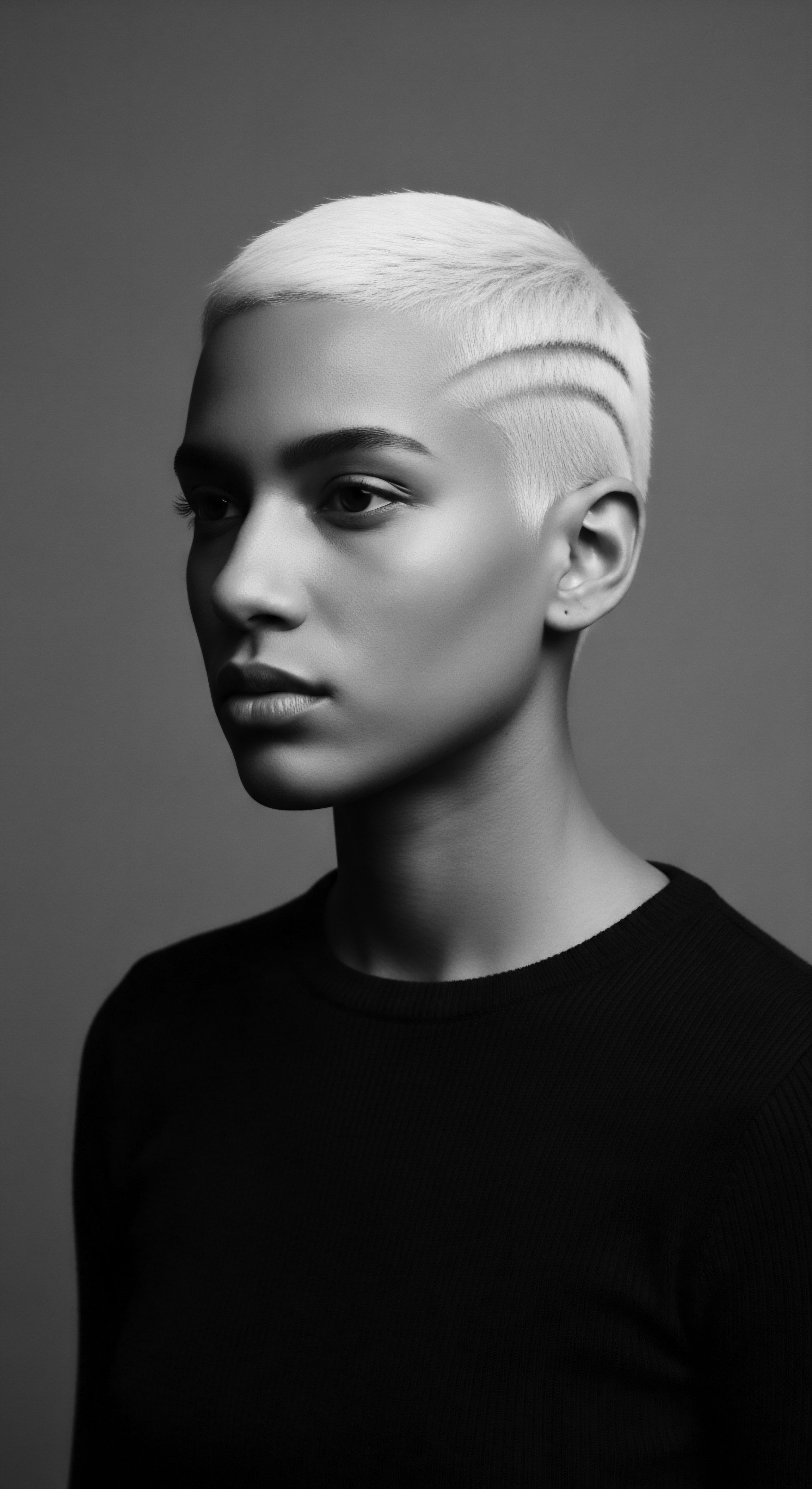
Academic
The academic understanding of historical beauty standards transcends superficial aesthetic preferences, interpreting them as complex socio-cultural constructs deeply interwoven with power, ideology, and the very fabric of human experience. From this scholarly vantage point, a historical beauty standard functions as a prescribed aesthetic ideal, sanctioned and perpetuated by dominant social structures, which subsequently molds individual self-perception and collective social hierarchies. Its definition encompasses a systematic delineation of what is considered attractive, often implicitly dictating norms for physical features, demeanor, and presentation. The profound meaning of these standards often lies in their capacity to establish and reinforce social stratification, particularly visible in the historical marginalization of textured hair.
These standards are not accidental formations; they are often products of specific historical epochs, economic systems, and colonial enterprises. They gain their persuasive power through various vectors ❉ institutional mandates, media representation, educational curricula, and subtle, pervasive social conditioning. For textured hair, especially within the historical context of the African diaspora, the dominant beauty standards of European origin functioned as mechanisms of subjugation.
They systematically devalued ancestral hair textures, deeming them “unruly,” “unprofessional,” or “unclean” in contrast to the celebrated ideals of straight, fine hair. This imposition was more than an aesthetic preference; it was a profound ideological assault on the embodied heritage of Black and mixed-race individuals, forcing a deep internal struggle with identity and self-worth.
Academic analysis reveals historical beauty standards as powerful socio-cultural constructs, profoundly shaping identity and societal structures, particularly for textured hair.
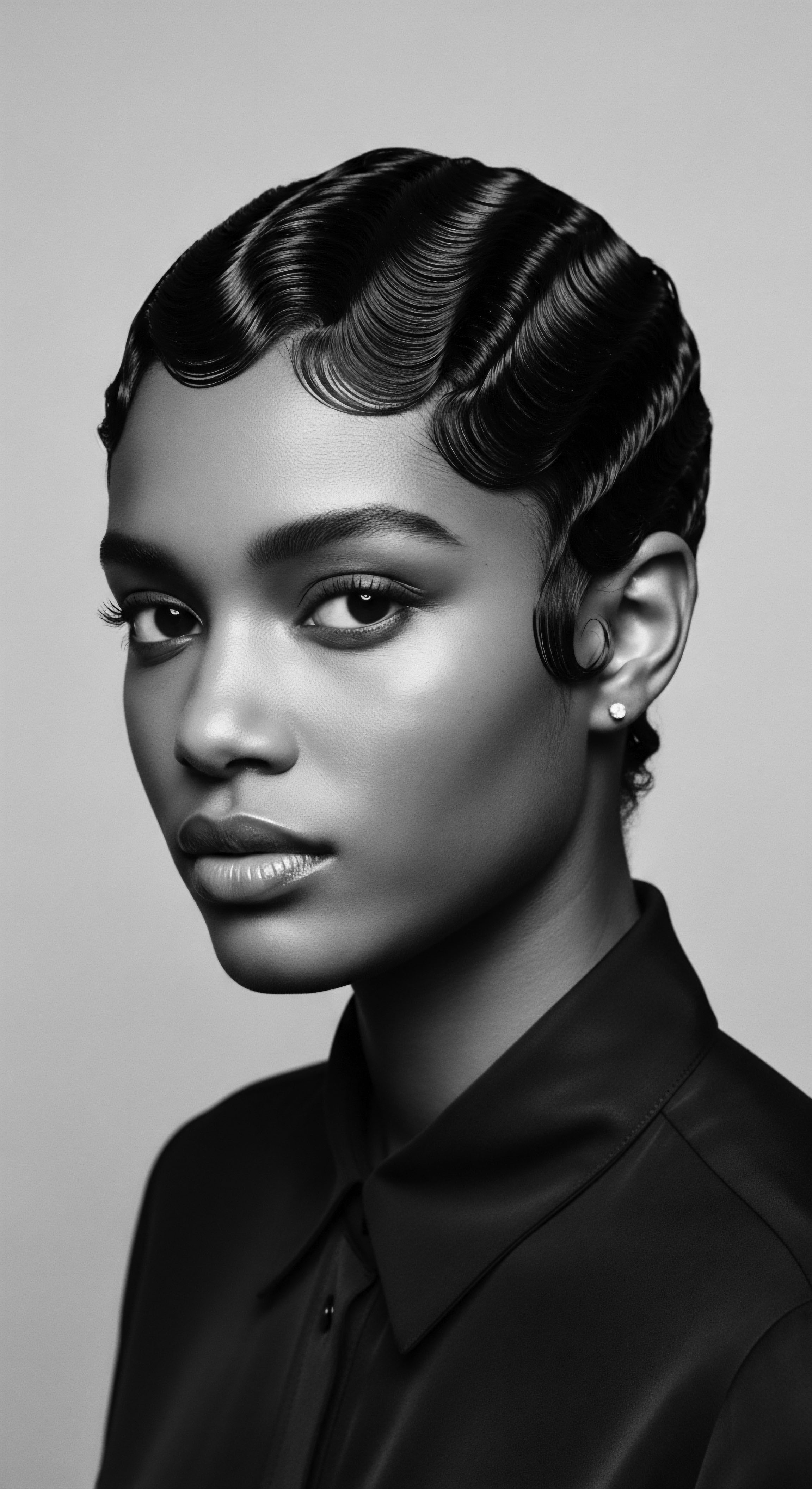
The Internalization of Devaluation ❉ A Historical Case Study
The concept of “good hair” versus “bad hair” stands as a stark, enduring example of an internalized historical beauty standard within Black communities. This dichotomy, a direct legacy of chattel slavery and post-emancipation racial subjugation, illustrates how dominant European aesthetic ideals infiltrated and fragmented the perception of Black selfhood. During slavery, lighter skin and straighter hair were often associated with proximity to white slaveholders, sometimes affording marginally better treatment or domestic roles, creating a perceived, albeit false, hierarchy even within the enslaved community.
This insidious stratification persisted after emancipation, becoming a potent factor in social mobility and acceptance within a society structured on racial caste. Individuals with hair deemed “good”—meaning less coiled, softer, or easier to straighten—often received preferential treatment in employment, housing, and social interactions, cementing this arbitrary standard as a pathway, however tenuous, to perceived upward mobility.
This phenomenon is meticulously documented in sociological and historical studies. For instance, Craig and Rucker (2007) , in their work examining African American beauty culture, extensively discuss how the “good hair” narrative became a pervasive societal metric, influencing everything from interpersonal relationships to economic opportunities. This was not a mere preference but a powerful socio-economic determinant. The pervasive messaging from external society, reinforced by subtle (and overt) cues within the community, created a deep-seated devaluation of natural textured hair.
This historical conditioning led to widespread adoption of damaging hair straightening practices, from caustic lye-based relaxers to hot combs, all in pursuit of a standard that was fundamentally alien to the natural biology of Black hair. The physical discomfort and hair damage were often secondary to the perceived social and economic benefits of conformity.
The long-term consequences of this internalized standard are profound and multifaceted. Psychologically, it contributed to body image issues, self-esteem challenges, and a feeling of alienation from one’s ancestral heritage. Sociologically, it reinforced colorism and featurism within Black communities, creating divisions based on proximity to white phenotypic ideals.
Economically, it fueled industries built around hair alteration, often at the expense of hair health and cultural authenticity. The struggle against this internalized standard became a core component of later civil rights and Black Power movements, which championed the natural Afro as a symbol of defiance and a reclaiming of Black identity.
| Aspect of Impact Social Stratification |
| Description within Historical Beauty Standards Perceived social advantages tied to hair texture closer to European ideals. |
| Manifestation/Consequence Preferential treatment in employment, social circles, and perceived respectability. |
| Aspect of Impact Economic Incentives |
| Description within Historical Beauty Standards Demand for hair straightening products and services. |
| Manifestation/Consequence Growth of commercial hair alteration industries; financial burden on individuals. |
| Aspect of Impact Psychological Effects |
| Description within Historical Beauty Standards Internalized devaluation of natural hair; self-esteem issues. |
| Manifestation/Consequence Body dysmorphia, identity confusion, emotional distress related to hair. |
| Aspect of Impact Cultural Disconnection |
| Description within Historical Beauty Standards Distancing from ancestral hair traditions and natural aesthetics. |
| Manifestation/Consequence Erosion of indigenous hair knowledge; diminished connection to heritage. |
| Aspect of Impact Health Implications |
| Description within Historical Beauty Standards Use of harsh chemicals and heat for straightening. |
| Manifestation/Consequence Scalp damage, hair breakage, chemical burns, long-term hair thinning. |
| Aspect of Impact The enduring influence of the "good hair" vs. "bad hair" paradigm highlights the deep, systemic impact of historical beauty standards. |
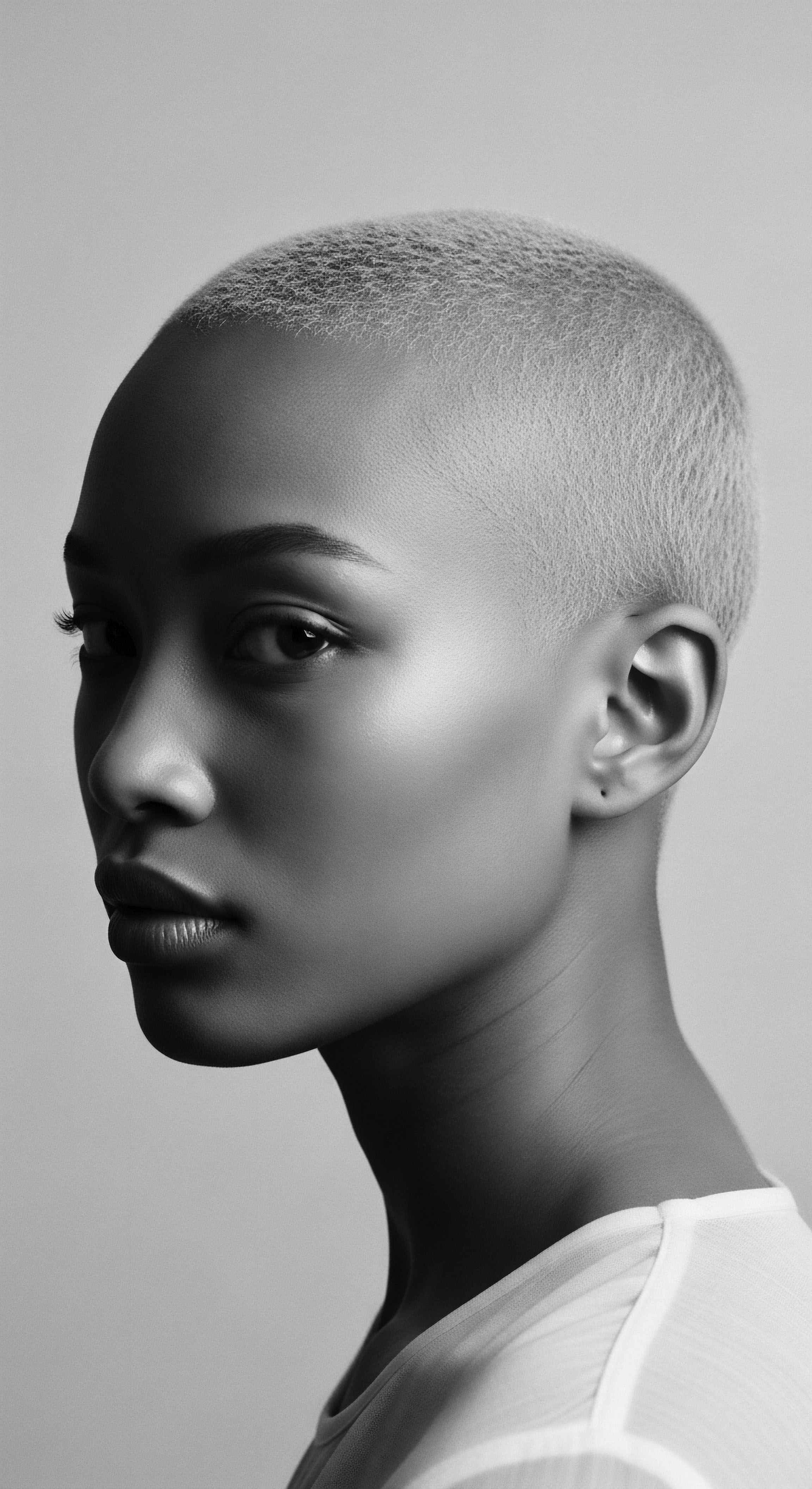
Resistance and Reclamation ❉ The Unbound Helix
Despite the pervasive nature of these standards, resistance movements emerged as profound acts of reclamation. The Black is Beautiful movement of the 1960s and 70s was a powerful counter-narrative, explicitly challenging the hegemony of Eurocentric beauty ideals by celebrating the natural Afro. This was not merely a stylistic choice; it was a political statement, an assertion of racial pride, and a re-affirmation of an ancestral aesthetic.
The choice to wear natural hair, with its coils and kinks, became a symbol of liberation from the psychological bondage of imposed standards. This period marked a significant shift in the discourse surrounding Black hair, moving towards an understanding that recognized its inherent beauty and cultural potency.
Further academic inquiry reveals how these historical beauty standards have been perpetuated through media representations and societal institutions. Textbooks, advertising, and popular culture consistently presented a narrow definition of beauty, often excluding or caricaturing Black hair. The lack of positive representation contributed to the normalization of hair alteration practices.
However, contemporary scholarship in critical race theory and cultural studies continues to deconstruct these historical narratives, exposing their ideological underpinnings and their enduring impact. These studies compel a deeper understanding of how historical beauty standards are not neutral aesthetic preferences but rather powerful tools of social control, with real consequences for health, identity, and socio-economic outcomes.
The enduring wisdom of ancestral approaches to textured hair care, often centered on natural ingredients and mindful practices, finds intriguing echoes and expansions in our contemporary scientific comprehension. From the generational hearths where specific oils and herbs were revered for nurturing hair within the context of historical beauty standards, a legacy of embodied knowledge unfolds, now gently illuminated and often affirmed by modern scientific insights into hair structure and scalp health. This connection allows us to appreciate the unbroken lineage of care surrounding textured hair. The re-discovery and validation of traditional practices, like hair oiling or protective styling, through scientific lenses, underscore the profound foresight embedded in ancestral wisdom.
- Deep Conditioning with Natural Butters ❉ Traditional use of shea butter or cocoa butter for moisture, now understood through their rich fatty acid profiles that seal cuticles.
- Protective Styles ❉ Braids and twists, historically used to manage hair, are now recognized for minimizing manipulation and retaining length by preventing breakage.
- Scalp Massages with Oils ❉ Ancestral practices for stimulating growth, supported by modern understanding of increased blood circulation and nutrient delivery to follicles.
The definition of historical beauty standards, especially for textured hair, requires a recognition of this ongoing dialectic ❉ the historical imposition of foreign ideals, the resilience of ancestral practices, and the continuous reclamation of inherent beauty. It is a dynamic field of study that not only illuminates the past but also informs contemporary movements for hair liberation and cultural affirmation. The academic pursuit aims to dismantle the lingering effects of these standards, fostering an appreciation for the vast spectrum of human hair textures and their profound cultural significance.
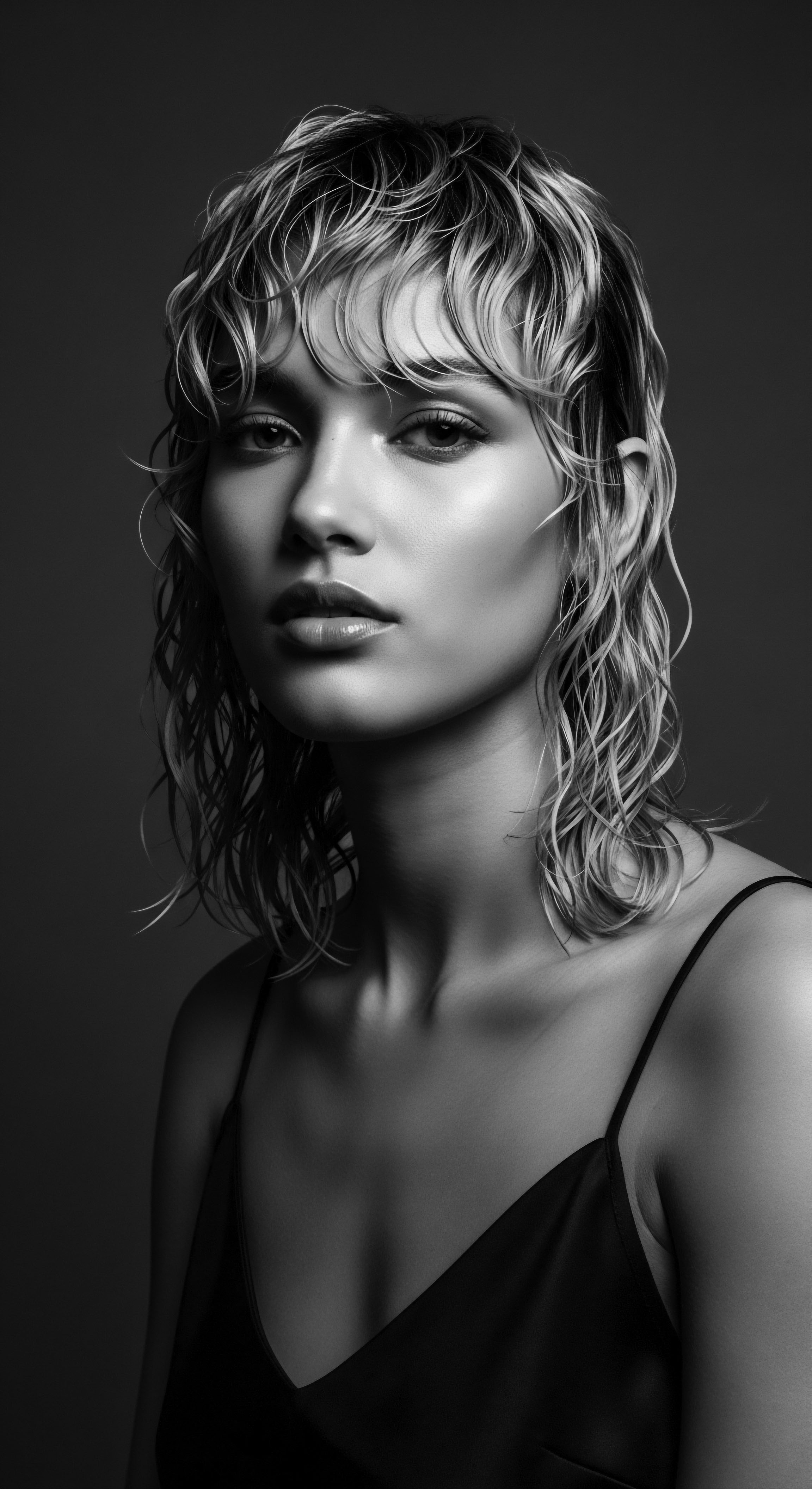
Reflection on the Heritage of Historical Beauty Standards
Contemplating the enduring heritage of historical beauty standards, particularly as they pertain to textured hair, stirs a profound sense of continuity and transformation. It is a testament to the remarkable spirit of those who, across generations, have navigated complex ideals and often hostile environments, all while striving to maintain a connection to their authentic selves. The journey of textured hair through time is not just a study of aesthetics; it is a meditation on resilience, on the quiet strength woven into each curl and coil. It is a story of adaptation and persistent self-affirmation, echoing through the ancestral lines.
The very meaning of beauty, once dictated by external forces, is continually being reshaped by the wisdom passed down through families and communities. The rituals of care, the intricate artistry of traditional styles, and the communal celebration of diverse textures speak to a heritage that transcends transient fads. These are the living traditions that allow us to understand why hair holds such sacred significance for so many ❉ it is a tangible link to ancestry, a vibrant expression of identity, and a profound declaration of self-possession. The standards that once sought to diminish natural hair now confront a resurgence of pride, born from a deep understanding of its history and its inherent grandeur.
The ongoing reclamation of natural textured hair signifies a profound healing, a recognition of beauty that originates from within and extends outward. It represents a conscious choice to honor the journey of those who came before, recognizing their struggles and celebrating their enduring spirit. Each strand, imbued with the echoes of ancient practices and the whispers of resilient ancestors, tells a story of survival and triumph.
The historical beauty standards, once instruments of conformity, now serve as powerful reminders of the journey undertaken, guiding us toward a future where every texture is not just accepted, but cherished as a unique masterpiece. This heritage continues to shape our understanding of beauty, grounding it in authenticity and an enduring connection to our roots.
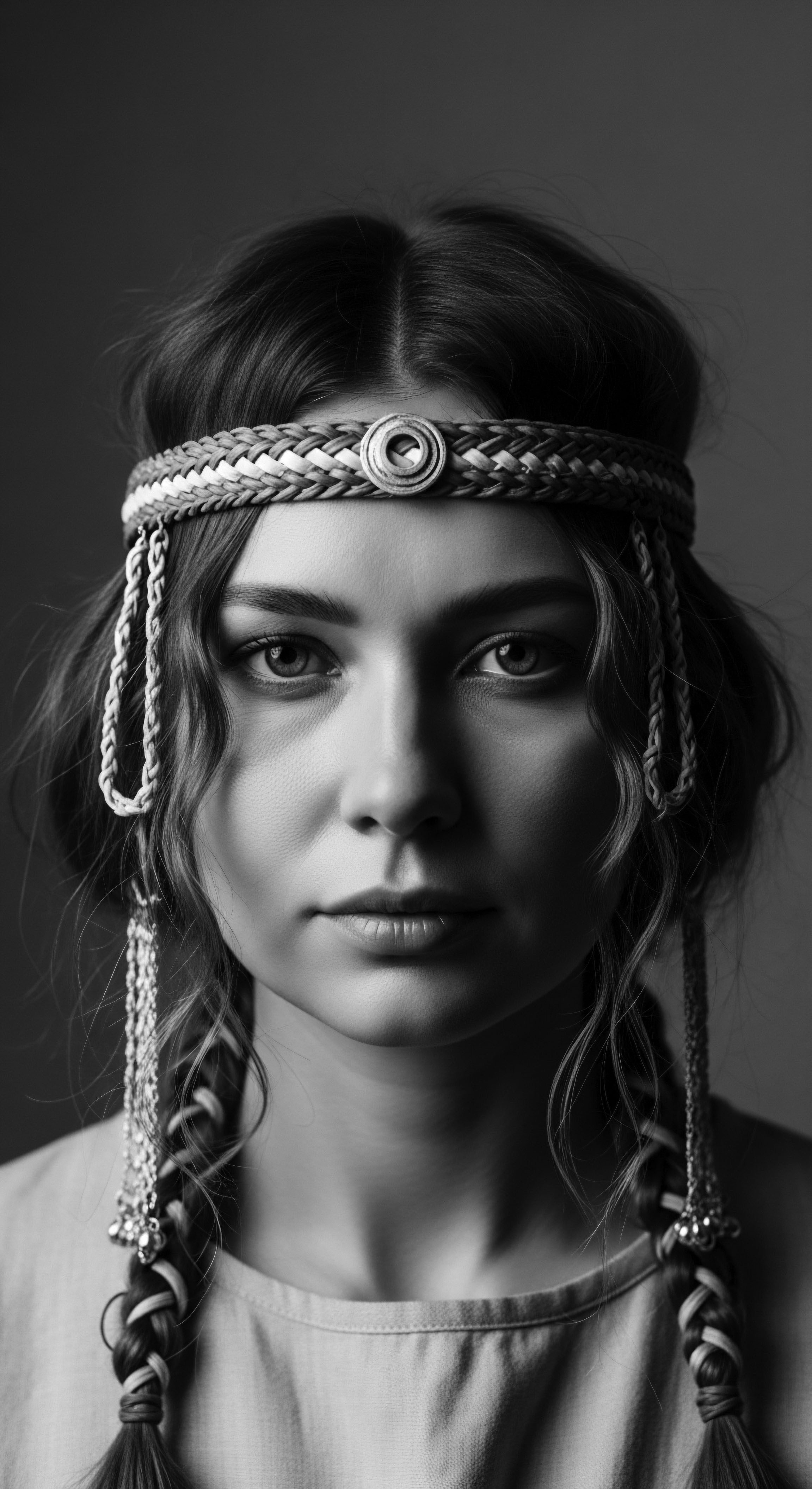
References
- Craig, Maxine Leeds, and Walter C. Rucker. Ain’t I a Beauty Queen? ❉ Black Women, Beauty, and the Politics of Race. Oxford University Press, 2007.
- Byrd, Ayana, and Lori L. Tharps. Hair Story ❉ Untangling the Roots of Black Hair in America. St. Martin’s Press, 2001.
- Mercer, Kobena. Welcome to the Jungle ❉ New Positions in Black Cultural Studies. Routledge, 1994.
- Banks, Ingrid. Hair Matters ❉ Beauty, Power, and Black Women’s Consciousness. New York University Press, 2000.
- White, Deborah Gray. Ar’n’t I a Woman? ❉ Female Slaves in the Plantation South. W. W. Norton & Company, 1999.
- Patton, Tracey Owens. African-American Women’s Hair ❉ An Exploration of Historical Beauty and Identity. Peter Lang, 2006.
- Hooks, Bell. Black Looks ❉ Race and Representation. South End Press, 1992.
- Rooks, Noliwe M. Hair Raising ❉ Beauty, Culture, and African American Women. Rutgers University Press, 1996.
